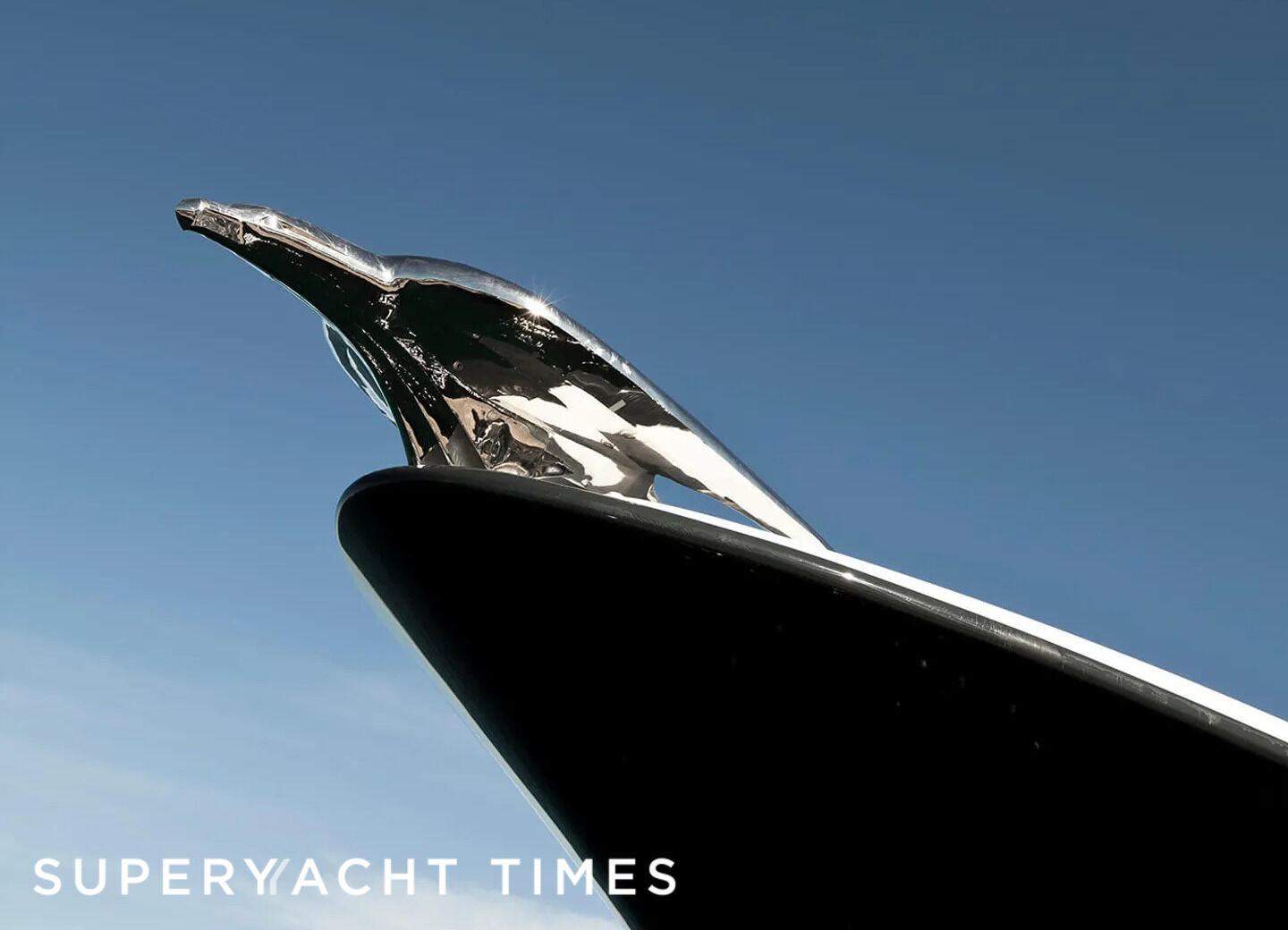Yachts have often been considered status symbols of the wealthy and privileged, with their silhouettes in ports and harbours across the world standing as emblems of trade, wealth and prestige. With the future of yacht design constantly changing, every detail holds significance; and while diminishing in popularity, the figurehead of a boat once stood as a status symbol of tradition and individual expression.
Figureheads are elaborately carved sculptures mounted at the bow of a ship, holding a rich maritime tradition that extends from ships to yachts, and more recently superyachts. The tradition of figureheads on vessels spans not only centuries, but countries, appearing throughout history across the globe.
As time progressed, the Romans of the third century would place carvings of their deities on the bows of their galleys. In addition to these divine figures, they were also known to depict centurions to symbolise bravery and strength in combat. This tradition echoes that of the Viking ships which would be adorned with dragons’ heads to ward off malevolent spirits and instil fear into the enemy. 
By the 17th and early 18th century, the lion was once again among the most common figurehead motifs at the bow of boats, symbolising power and strength of those onboard. But it was also around this time that the use of human forms became more popular in the design of figureheads.
By the 18th and 19th centuries, figureheads had reached the pinnacle of their artistry. Often known as the “Golden Age of Sail,” figureheads became more elaborate and ornate during this period. The use of full-length human forms, mostly of classical or mythological figures to represent the name of the vessel, was on the rise, partly due to the illiteracy of many sailors during the period.
Historically, figureheads served both practical and symbolic purposes. They were initially designed to act as a form of spiritual protection for the ship and its crew, often depicting mythological or religious figures believed to offer guidance and safeguard against maritime perils.
The figureheads of today however, have transitioned from their traditional role as symbols of protection, to more of an aesthetic and artistic expression of wealth. A number of modern superyacht owners have commissioned bespoke figureheads that reflect their personal tastes, themes, or even serve as a nod to the vessel's name. 
The three-masted Bermuda rigged schooner was once owned by movie and media billionaire Barry Diller, husband of fashion designer Diane von Fürstenberg and its this famous pairing that led to the creation of EOS’s figurehead. Named after the Greek Goddess of the dawn, EOS features a hand-crafted figurehead at her bow, modelled on Barry Diller’s wife, Diane von Fürstenberg. Crafted in stainless steel by artist Anh Duong, Diane von Fürstenberg modelled for the 2.7-metre figurehead during a series of different sessions.
But it's not just sailing yachts that are known to sport figureheads, the modern evolution of maritime aesthetics has led to an increasing rise of motor yachts also showcasing these works of art. Whether evoking a sense of nostalgia for maritime traditions, or pushing the boundaries of contemporary art, figureheads continue to play a role in shaping the identity of yachts.
Animal figureheads have become a popular theme amongst superyacht owners in recent years, with the 65-metre 2013 Palmer Johnson motor yacht Lady M displaying a two-metre pouncing cat on her bow. Although some people have described this as a jaguar or a panther, her designer Nuvolari Lenard explains that she is simply just a cat. Crafted by the aluminium welders at Palmer Johnson, the cat motif occurs throughout Lady M’s design, thanks to the owner’s wife’s love for felines. A graceful cat symbol can be seen on the transom logo of Lady M, and repeated again as emblems on her gates and skylights. 
Positioned with one paw in the air and the other resting on an American football helmet, the silver jaguar was constructed by Belgium-based 3D-printing factory Materialise and symbolised elegance and power. The 100kg jaguar was created using 3D printed structural reinforcements, with its outer shell taking up 5.8 percent of the total volume. It was created using 5,000 printed layers, each measuring just 0.5 millimetres and with 10,260 lumens of electric light shining from its eyes. 
However, there is one figurehead that has been dominating the headlines since the yacht’s launch in August 2022. Amazon founder Jeff Bezos’ 127-metre Oceanco superyacht Koru features an impressive carved wooden figurehead which has been drawing the attention of the world's press for months.
When she was launched, online news publications noted how the curvaceous winged figurehead at the bow of Koru bore a striking resemblance to Bezos’ fiancé, Lauren Sanchez. The figurehead is dressed in a flowing gown with long hair, which many believed was modelled on the former TV personality. However, in an interview with Vogue magazine last year,Sanchez set the record straight about the design, “I’m very flattered, but it’s not, [me].”
The polished female figurehead of Koru is instead based on one of Jeff Bezos’ favourite mythological figures, Freyja. The Norse goddess of love, fertility, war, and gold also features a spiral shape necklace, with an unfurling silver fern frond, which signifies creation and perpetual movement.
From their origins in ancient civilisations to their modern-day interpretations, figureheads continue to symbolise power, grace, and individuality and shape the identity of yachts. Despite the ever-changing seas of yacht design, figureheads still stand as a reminder of the timeless allure of the ocean and the creativity of the owners onboard.